Когда речь идет о механической обработке и инструментах, точность - это все. Одним из наиболее важных компонентов, на которые полагаются машинисты, являются твердосплавные вставки. В частности, треугольные твердосплавные вставки широко используются благодаря своей универсальности и эффективности. Если вы хотите углубить свои знания об этих инструментах, вы пришли по адресу. В этом подробном руководстве вы узнаете все, что вам нужно знать о Размеры твердосплавных пластин для треугольниковВ них подробно описаны конкретные модели металлических порошков, области их применения, свойства материалов и многое другое.
Обзор размеров твердосплавных вставок Triangle
Твердосплавные пластины Triangle - это режущие инструменты треугольной формы, обычно используемые при фрезеровании и токарной обработке. Их форма позволяет использовать несколько режущих кромок, обеспечивая повышенную эффективность и долговечность. Выбор размера и типа пластины зависит от конкретных требований к обработке, таких как обрабатываемый материал и желаемая чистота обработки.
Основные характеристики твердосплавных вставок Triangle
- Универсальность: Подходит для различных видов обработки.
- Долговечность: Изготовлены из прочных твердосплавных материалов, которые выдерживают высокие температуры и износ.
- Эффективность: Многогранные режущие кромки снижают необходимость частой смены инструмента.
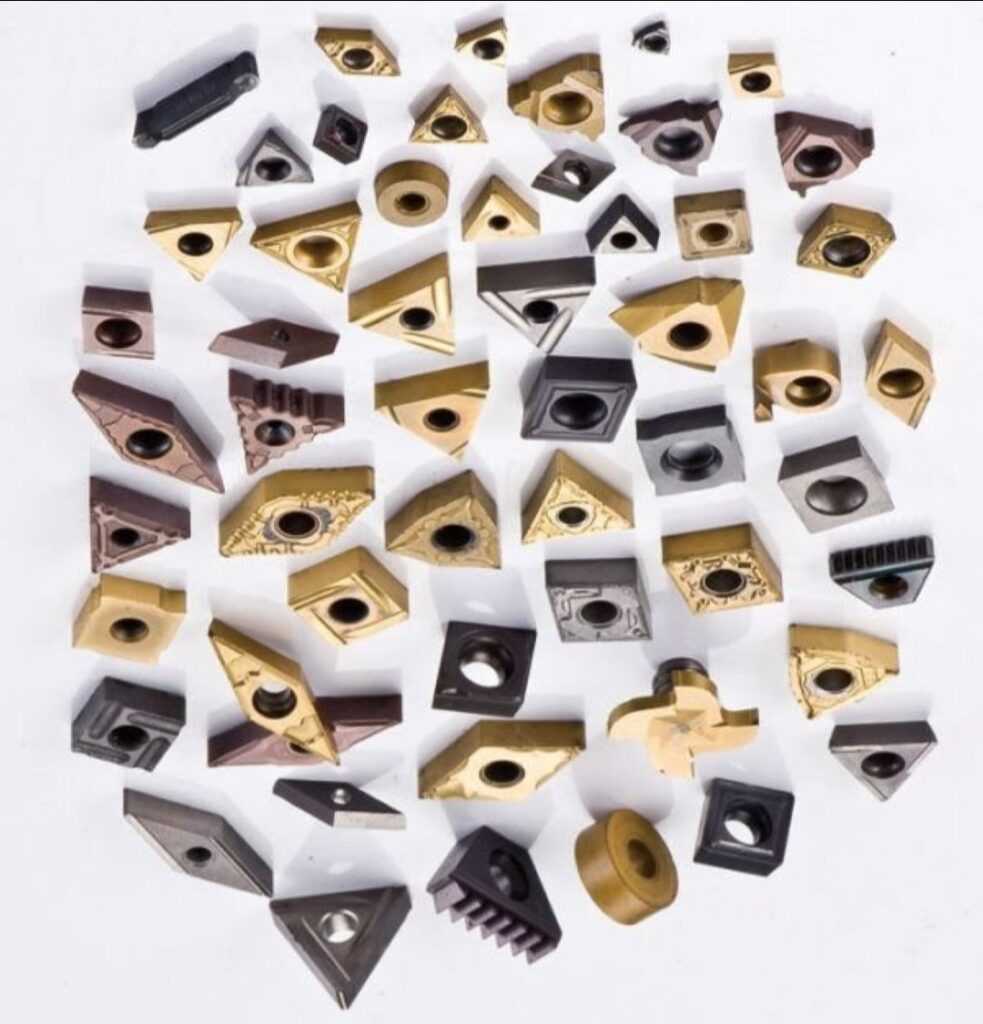
Размеры и типы твердосплавных вставок Triangle
Твердосплавные вставки Triangle бывают разных размеров и типов, каждый из которых предназначен для конкретных задач. Здесь мы перечислим и опишем некоторые из наиболее распространенных моделей:
| Модель | Размер (мм) | Приложение | Характеристики |
|---|---|---|---|
| TNMG 160404 | 16x04x04. | Общий поворот | Высокая износостойкость, подходит для стали и чугуна |
| TCGT 110302 | 11 сезон, 3 серия. | Отделочные работы | Острая режущая кромка, превосходная обработка поверхности |
| TPMR 090304 | 09x03x04 | Прецизионная обработка | Высокая точность, минимальная вибрация |
| TNMG 220408 | 22 сезон 4 серия. | Сверхмощное вращение | Прочный, идеально подходит для прерывистых резов |
| TPGH 160304 | 16 сезон 3 серия. | Обработка алюминия | Полированная поверхность, уменьшающая образование наплывов |
| TNMA 160408 | 16x04x08 | Черновые работы | Высокая прочность, подходит для черновой обработки |
| TCMT 090204 | 09 сезон 2 серия. | Легкая обработка | Универсальный, подходит для легких и средних работ |
| TPGT 110302 | 11 сезон, 3 серия. | Отделка | Прецизионная отделка, острая режущая кромка |
| TNMG 331 | 3/8″ IC | Сильная резка | Высокая прочность, отлично подходит для тяжелой обработки |
| TPMT 160304 | 16 сезон 3 серия. | Полуфабрикаты | Сбалансированная производительность для полуфинишной обработки |
Применение Размеры твердосплавных вставок Triangle
Твердосплавные вставки Triangle предназначены для широкого спектра применений. В приведенной ниже таблице указаны основные области применения различных размеров:
| Приложение | Размер вставки | Материалы |
|---|---|---|
| Общее токарное дело | TNMG 160404 | Сталь, чугун |
| Отделка | TCGT 110302 | Нержавеющая сталь, алюминий |
| Прецизионная обработка | TPMR 090304 | Закаленная сталь |
| Сверхмощный токарный станок | TNMG 220408 | Легированная сталь, высокотемпературные сплавы |
| Обработка алюминия | TPGH 160304 | Алюминиевые сплавы |
| Черновая обработка | TNMA 160408 | Чугун, сталь |
| Легкая механическая обработка | TCMT 090204 | Цветные металлы |
| Полуфабрикаты | TPMT 160304 | Различные сплавы |
Свойства материала твердосплавных вставок Triangle
Рабочие характеристики твердосплавных пластин triangle во многом определяются свойствами их материала. В следующей таблице приведены эти свойства:
| Недвижимость | Описание |
|---|---|
| Твердость | Высокая твердость для обеспечения износостойкости |
| Жесткость | Способность выдерживать удары и избегать сколов |
| Термостойкость | Стабильность при высоких температурах резки |
| Химическая устойчивость | Устойчивость к окислению и химическому износу |
| Теплопроводность | Эффективный отвод тепла во время резки |
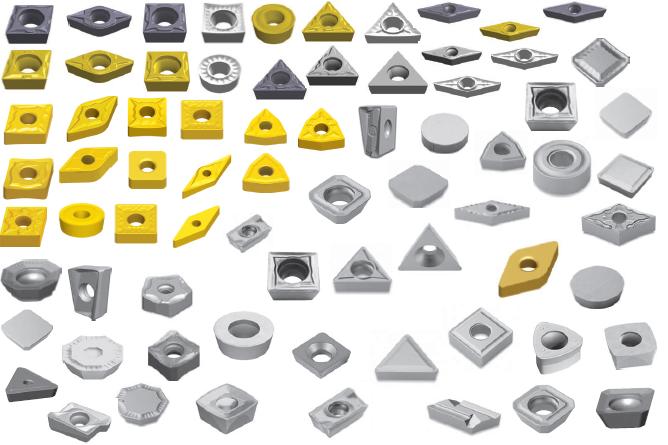
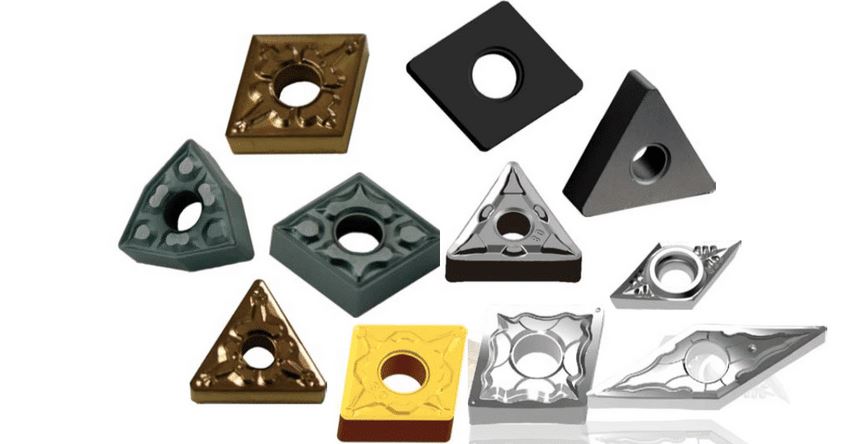
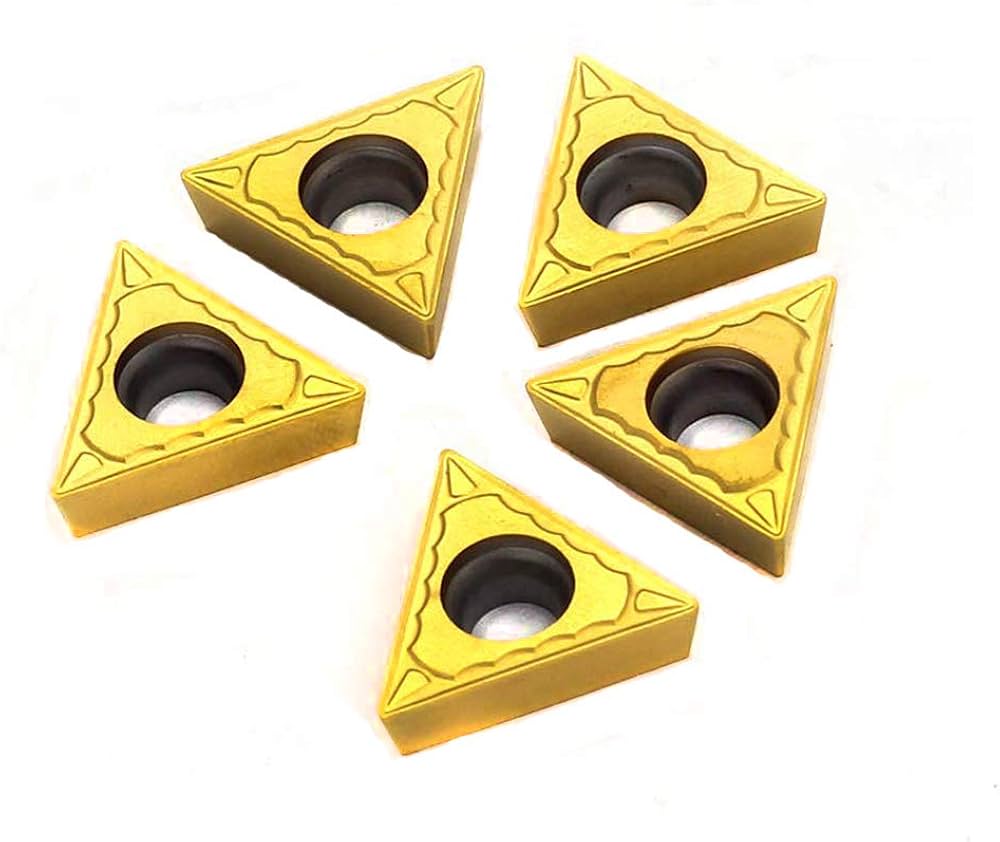

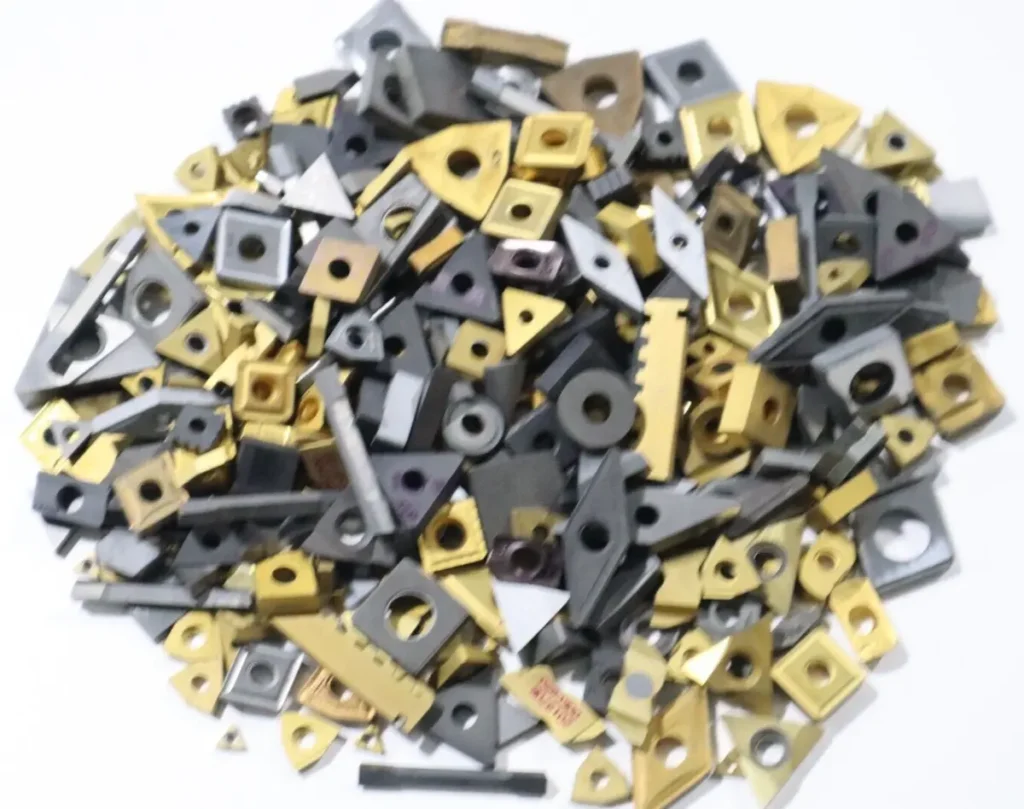
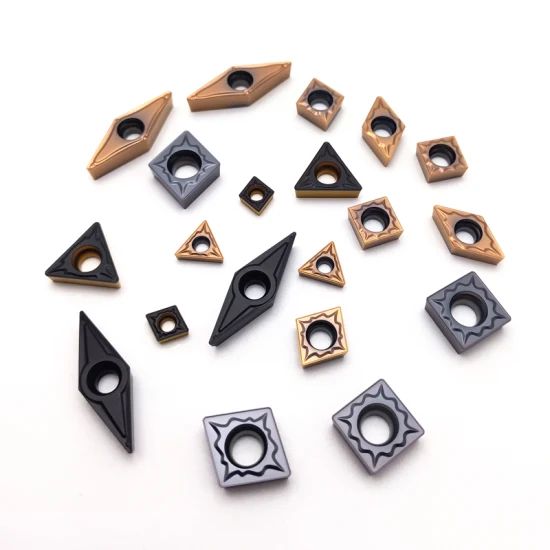
Состав и характеристики
Твердосплавные вставки изготавливаются из композитного материала, состоящего из твердой фазы (карбидов) и связующего металла (как правило, кобальта). Такой состав придает им уникальные свойства:
| Компонент | Свойства |
|---|---|
| Карбид вольфрама (WC) | Высокая твердость, износостойкость |
| Кобальт (Co) | Обеспечивает прочность и устойчивость |
| Карбид титана (TiC) | Повышает термостойкость и химическую стабильность |
| Карбид тантала (TaC) | Повышает прочность и устойчивость к термоударам |
Твердость, прочность и износостойкость
Различные марки твердого сплава используются для достижения определенных уровней твердости, прочности и износостойкости. В таблице ниже приведено сравнение этих свойств для распространенных марок твердого сплава:
| Класс | Твердость (HRA) | Предел прочности при поперечном разрыве (МПа) | Износостойкость |
|---|---|---|---|
| C2 | 89.5 | 2500 | Высокая |
| C3 | 91.0 | 2300 | Очень высокий |
| C4 | 92.5 | 2100 | Экстрим |
| C5 | 88.0 | 2800 | Средний |
| C6 | 90.0 | 2600 | Высокая |
Спецификации и стандарты
Твердосплавные пластины соответствуют определенным стандартам и спецификациям для обеспечения совместимости и производительности. Вот таблица с подробным описанием этих аспектов:
| Стандарт | Спецификация | Подробности |
|---|---|---|
| ISO | ISO 1832 | Международный стандарт для твердосплавных пластин |
| ANSI | ANSI B212.4 | Американский стандарт для форм и размеров твердосплавных пластин |
| DIN | DIN 4987 | Немецкий стандарт для твердосплавных пластин |
| JIS | JIS B4125 | Японский стандарт для твердосплавных пластин |
Поставщики и ценообразование
Понимание рынка и поиск надежных поставщиков имеет решающее значение. Вот несколько известных поставщиков и общее представление о ценах:
| Поставщик | Расположение | Диапазон цен (за штуку) |
|---|---|---|
| Sandvik Coromant | Глобальная | $10 – $50 |
| Kennametal | Глобальная | $15 – $55 |
| Mitsubishi Materials | Глобальная | $12 – $45 |
| ИСКАР | Глобальная | $20 – $60 |
| Sumitomo Electric | Глобальная | $18 – $52 |
Выбор правильного размера твердосплавной вставки Triangle
При выборе подходящего размера пластины необходимо учитывать несколько факторов, таких как обрабатываемый материал, тип операции и желаемая чистота обработки. Вот руководство, которое поможет вам выбрать подходящую вставку:
| Фактор | Рассмотрение | Рекомендуемый размер |
|---|---|---|
| Твердость материала | Для твердых материалов требуются более прочные вставки | Классы C2, C4 |
| Тип операции | Черновая обработка против чистовой | TNMA для черновой обработки, TCGT для чистовой обработки |
| Желаемая отделка | Точность и качество поверхности | TPMR - для точности, TPGH - для гладких поверхностей |
| Мощность машины | Мощные и маломощные машины | Большие размеры для большой мощности, меньшие - для малой мощности |
Преимущества и ограничения твердосплавных вставок Triangle
При выборе инструмента необходимо взвесить все его плюсы и минусы. Вот сравнение преимуществ и ограничений треугольных твердосплавных пластин:
| Аспект | Преимущества | Ограничения |
|---|---|---|
| Универсальность | Подходит для различных операций | Может потребоваться частая смена специализированных задач |
| Долговечность | Высокая износостойкость | Дорогая первоначальная стоимость |
| Эффективность | Несколько режущих кромок | Требуется точная настройка |
| Производительность | Неизменно высокое качество отделки | Ограничено конкретными материалами и операциями |

ЧАСТО ЗАДАВАЕМЫЕ ВОПРОСЫ
| Вопрос | Ответить |
|---|---|
| Для чего используются треугольные твердосплавные вставки? | Они используются для токарной, фрезерной и прецизионной обработки. |
| Почему предпочтительны твердосплавные вставки? | Благодаря высокой твердости, износостойкости и способности сохранять острую кромку. |
| Как выбрать подходящую твердосплавную пластину? | Учитывайте материал, тип работы и желаемую отделку. Обратитесь к руководству по выбору, приведенному выше. |
| Дорогие ли твердосплавные пластины? | Поначалу они могут стоить дороже, но обеспечивают более длительный срок службы и лучшую производительность. |
| Каковы общие стандарты для твердосплавных пластин? | Стандарты ISO, ANSI, DIN и JIS. |
Заключение
Понимание Размеры твердосплавных пластин для треугольников имеет решающее значение для оптимизации операций обработки. Правильный выбор размера и типа вставки позволит вам повысить эффективность, сократить время простоя и добиться превосходных результатов. Независимо от того, являетесь ли вы опытным механиком или новичком, в этом руководстве вы найдете информацию, необходимую для принятия обоснованных решений по выбору инструмента.




